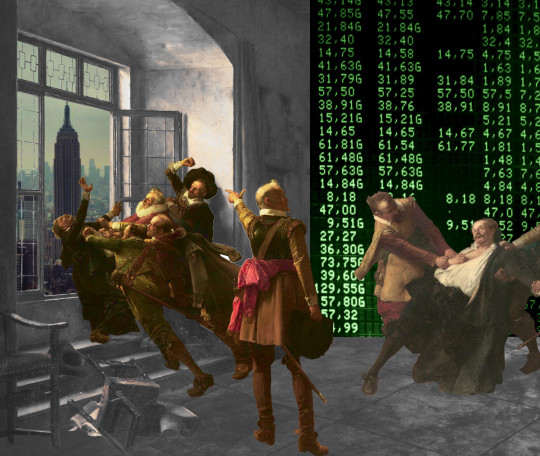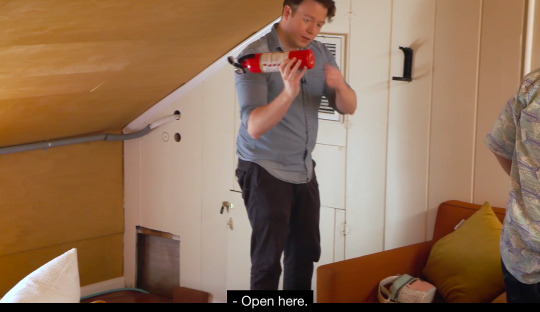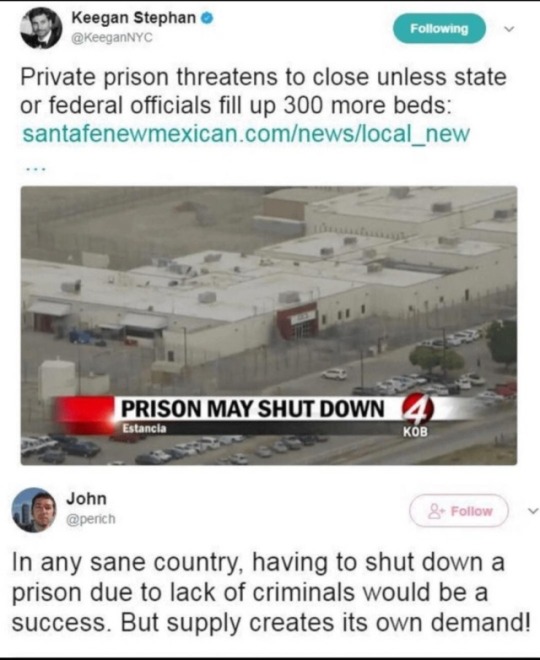#for profit prisons
Text
70 notes
·
View notes
Text

I watched this last night because I noticed Jordan Peele was involved. I was just expecting a fun stop motion animation movie.
I was not expecting:
Racially and ethnically diverse cast ✓
Positive trans portrayal ✓
Anti for-profit prison message ✓
Kick ass afro-punk soundtrack ✓
It makes my heart happy to see so much positive portrayals of diversity set to rock music by BIPOC musicians. 🙂

#wendell & wild#jordan peele#keegan michael key#afropunk#protect trans kids#diversity#wendell and wild#for profit prisons#representation matters#bipoc representation#lgbtq representation#punk rock#black history month#amplifymelanatedvoices#amplify black voices#bipoc rock#bipoc#key and peele#key & peele#trans acceptance
157 notes
·
View notes
Text

#hunger#SNAP#food stamps#republicans#rethuglicans#migrants#immigration#border#homeland security#CBP#family separation#healthcare#health care#for profit prisons#Christianity#Matthew 25: 42-45#Jesus
5 notes
·
View notes
Text
Read 9: Read a story that talks about privatized (corporate version of) government functions written by someone on the receiving end (prisons, health insurance, anything that government has that corporations also offer for profit)
--
You can find the challenge description and what's going on at this link
If you wanna do stuff out of order the rest of the Read challenges are at this link
The whole challenge has 84 items, so if you want to do the entire thing in a year, that averages out to about 1 item every 4-5 days. Posts will come out about every two days
4 notes
·
View notes
Text
“....prisons faced “a grave crisis” [according to experts and the Roosevelt government] because of the industry’s and unions’ opposition to their products. Without work, prisons stood on the cusp of “riot and bloodshed,” and the whole prison system threatened to degenerate into a social wasteland filled with broken people and ruined lives. Without work, nearly all prison officials seemed to agree, prison served no rehabilitative purpose. But difficult questions regarding the specific nature of the Prison Labor Authority (PLA) troubled committee members. There seemed little compelling reason, for instance, why prisons focused exclusively on garment production or allowed prison-made garments to be sold on the open market. Despite the insistence by code defenders that the PLA forced prisons to meet the same standards of hours, wages, and prices as free industry, these claims obscured “the obvious fact that compensation paid to a State by a prison contractor is not precisely the same thing as wages paid a worker for his family’s support.” Pointedly, the committee — staffed as it was by men with experience in the labor movement — raised the obvious but critical fact that prison ofcials were asking to manufacture products bearing blue eagles, which “can by no stretch of the imagination be said to have been produced by labor invested with the right to collective bargaining.” In other words, prisons were suddenly asking to participate in a “free” economy with unfree workers, at the very moment that the labor movement stood poised to secure legal protections, such as collective bargaining rights, that had eluded it for a century. Hovering between the market and the state, prison labor remained a circle that seemingly could not be squared.
By the mid-point of 1935, it was clear to everyone that the Prison Labor Authority was a doomed experiment. “Regretfully and with extreme reluctance,” the Ulman Committee had concluded in November of 1934, the Prison Labor Code (PLC) had not and could not solve the problem of prison labor, despite its idealism and good intentions. Ironically, in fact, the NRA and PLA had “inadvertently reversed” the trend away from commercialized prison labor by propping up the existing system. “The true function of the prison,” the committee declared, “is neither to make prot for private contractors nor to make prot for the State.” If the prison did not rehabilitate its citizens, then it had failed in its fundamental social purpose and must be either reformed or abolished. The PLA’s lack of support from Ulman and his colleagues meant a new approach was inevitable. A few months after their report’s release, the Supreme Court ruled unanimously in its famous Schetcher decision in May of 1935 that the entire National Industrial Recovery Act was unconstitutional. The NRA and all of its codes — including the PLC — were on their way out.
The Prison Labor Code might well be judged a failure: a quickly aborted subagency that rightly disappeared into historical obscurity. However, the PLC stimulated significant political and cultural ripples that contributed to prison labor’s evolving place in American political economy. For one thing, the shortcomings of the PLC prompted legislators into action, as they scurried to safeguard the intention of the Hawes-Cooper law. In 1935, responding to the furor surrounding the PLC, Congress passed the Ashurst-Sumners Act, which strengthened Hawes-Cooper’s restrictions by turning any interstate shipment of convict-made goods into a federal offense, while the Walsh-Healy Act of 1936 outlawed convict labor on federal contract work. Even then, some businesses and unions remained unsatisfied because Ashurst-Sumners was effective only if the receiving state had a law on the books prohibiting the importation of prison-made goods. The amended Sumners-Ashurst Act of 1940 fixed this loophole, making it a federal crime to knowingly transport convict-made goods in interstate commerce for private use, regardless of laws in the individual states.
If the PLC lit a fuse that finally ignited an explosion of congressional legislation, it also led to a vast expansion of public knowledge about the actual conditions of labor in prisons across the country. Perhaps the key conclusion of the Ulman Committee was the discovery that almost all of the existing data on American prisons was obsolete. The Department of Labor had sporadically documented prison labor since the mid-1880s, but such information was unhelpful in understanding the situation in the 1930s. Indeed, if society had broadly agreed that the state-use system and its program of rehabilitative labor should be guiding norms, then much of the existing information, based as it was on scattered studies of a predominately convict-lease system, offered limited guidance for either professional criminologists or the general public.
Little wonder that, as the PLC disappeared, many of its officials and supporters (including Louis Robinson and Joseph Ulman) filtered into the Prison Industries Reorganization Committee (PIRC) and began the most systematic national survey of prison labor ever attempted. From California, PIRC investigators criticized the woeful overcrowding at San Quentin prison (the nation’s largest) and warned that, with out a strongly diversified state-use system, the culture of the prison “will be reduced to the most bitter, unregenerate and anti-social of the prisoners.” From Kansas, they warned that the state prison seemed like a tinderbox, having witnessed “several spectacular prison breaks, mine riots, and other disturbances” in recent years; they urged an end to overcrowding, the closure of a massive and dangerous prison coal mine, and stronger reliance on prison farms. And, from Georgia, investigators noted the inmate population’s racial disparity (of the state’s 4,437 inmates in 1936, 3,349 were black), the use of humiliating chain gangs on public works, and the sometimes-horrific holding pens (which, investigators urged, should be destroyed “in the interests of decency and humanity”). Under the scrutiny of federal investigators, stirrings of reform were evident. The very fact that a Georgia governor opened the state’s prison system to federal investigators and subsequently pledged to modernize it illustrates the 1930s-era move away from the idea of prison labor as a valuable commodity and toward a model focused on rehabilitation. While fair-minded and fact-based, the reports were by no means value neutral. Indeed, the thirteen detailed studies conducted by the PIRC created a pool of knowledge-as-advocacy. The entire purpose of accumulating facts and expert recommendations was to eliminate inhumane conditions, generate greater unity and efficiency, and push states toward robust state-use prison economies.
Given this legacy, the Prison Labor Code echoes oddly but urgently in the context of the early twenty-first century. Just as many political values of the New Deal era came under assault with the emergence of the New Right in the 1970s, so, too, did many ideas about crime, punishment, and the economy of prison labor. In part, this shift reected the tumultuous 1960s, an era of not only rising crime rates but also deep social unrest and numerous urban uprisings. As historians such as Michael Flamm have demonstrated, conservative politicians adroitly associated lawlessness with liberalism (and, by extension, with black civil rights), promising a return to “law and order” with a harsher and more punitive approach to (black) crime. Meanwhile, as historian Elizabeth Hinton has recently argued, much of the “war on crime” was ironically rooted in liberal policies of the Great Society. Driven by forces on both the Left and the Right, the American prison population exploded at mind-boggling rates. In 1970, fewer than 500,000 people were imprisoned; by 2014, that number had swollen to 2.5 million (even as crime rates declined), making America the largest penal state in the history of the world.
As attitudes toward crime shifted, so, too, did New Deal – era norms regarding the appropriateness of prison labor. Beginning in 1979, the Justice System Improvement Act — a piece of legislation drafted by a conservative think-tank — once again allowed for-profit corporations access to prison labor. This legal retreat from the premises of New Deal prison reform perfectly coincided with the expansion of “get tough” anti-crime laws and an enormously expanding prison population. Indeed, during the 1990s, thirty states legalized contract prison labor to private firms. In California, Proposition 139 even provided tax credits for firms who built plants on prisons. A handful of enormous, prestigious companies, such as AT&T and Microsoft, hired inmates in the early 1990s before backing away after receiving critical press coverage. Journalist Christian Parenti, exploring the issue in 1996, interviewed one garment producer who had moved his operation from a maquiladora in Mexico into California’s San Quentin prison because of the lower operating costs. As Parenti warned at the time, prisons “are rapidly becoming maquiladoras in our midst.” Bill Gates may not have wanted Microsoft customers to associate his fortune with convict labor, but many other types of companies — like textile producers — are much less vulnerable to bad press and much more sensitive to tight margins. As of 2012, over 600,000 — and possibly close to a million — prisoners were fully employed, often earning between $0.13 and $0.32 an hour while working for private contractors.”
- Matthew Pehl, “Between the Market and the State: The Problem of Prison Labor in the New Deal.” Labor: Studies in Working-Class History, Volume 16, Issue 2 (2019): p. 91-95.
#prison labor code#national recovery administration#the new deal#the great depression#for profit prisons#convict labor#prison made goods#prison industries#prison industrial complex#penal reform#georgia prisons#american prison system#convict labour#unfree labor#academic quote#united states history#history of crime and punishment#academic research
3 notes
·
View notes
Text
In what came to be known as the kids-for-cash scandal, Mark Ciavarella and another judge, Michael Conahan, shut down a county-run juvenile detention center and accepted $2.8 million in illegal payments from the builder and co-owner of two for-profit lockups. Ciavarella, who presided over juvenile court, pushed a zero-tolerance policy that guaranteed large numbers of kids would be sent to PA Child Care and its sister facility, Western PA Child Care.
Ciavarella ordered children as young as 8 to detention, many of them first-time offenders convicted of petty theft and other minor crimes. The judge often ordered youths he had found delinquent to be immediately shackled, handcuffed and taken away without giving them a chance to say goodbye to their families.
"Ciavarella and Conahan abandoned their oath and breached the public trust," Conner wrote Tuesday in his explanation of the damages award. "Their cruel and despicable actions victimized a vulnerable population of young people, many of whom were suffering from emotional issues and mental health concerns."
Ciavarella "ruled with breathtaking arrogance and an unfathomable disregard of due process," Conner wrote.
Ciavarella was known for a "zero-tolerance" approach to juveniles, and his sentencing decisions were often capricious. One 16-year-old in his courtroom for driving the wrong way down a one-way street was sentenced to 11 months in prison, because that was the number of buttons the offender had on her shirt, according to Conner's decision. Another juvenile who went in for a release hearing was instead sentenced to an additional eight months because the teen picked the wrong sports team.
Several of the youths who were sentenced by Ciavarella or Conahan have since died of drug overdoses or suicide, Conner wrote.
After the scheme was uncovered, the Pennsylvania Supreme Court threw out 4,000 juvenile convictions entered between 2003 and 2008...
#prison industrial complex#for profit prisons#child abuse#suicide mention tw#pennsylvania#Mark Ciavarella#Michael Conahan#us justice system
3 notes
·
View notes
Text
instagram
0 notes
Text
One thing that is no longer a debate:
privatization just means privatization of money.
Nothing more, nothing less.
A recent last week tonight episode on our prisons proved it.
Sure-our public prisons SUCKED. Barely held up to our OWN standards.
HOWEVER, EVERY-SINGLE-PRIVATE-PRISON (EVERY SINGLE ONE) failed substantially more, every single time. More abuses, more sicknesses, more deaths....to the point they INDUCED LABOR IN A WOMAN FOR PROFIT (cheaper than letting her go full term. YEAH. It's fucked up.)
So yeah. Public and local, everything. Anyone who says otherwise is a stupid greedy fuck. And no-I ain't saying you can't have your own property or even business; I am saying everyone who works in that business owns part of it.
My argument is simple: whatever original investment someone puts into a business, they do have the right to get back, plus profit. But to a STRICT limit. They don't get ALL the profits, FOREVER. That's fucking dumb, especially when they're not doing all the work. #wedoallthework
#last week tonight#prison#prisons#for profit#for profit prisons#privatization#worker owned businesses#locally owned utilities#publicly owned banks#we do all the work#they do all the stealing
0 notes
Text
#prison#inmate#dignity for all#school to prison pipeline#prison industrial complex#for profit prisons#politics#us politics#world politics
1 note
·
View note
Text

Dawg💀💀💀
What society is using the criminal justice system as an investment asset???
#So is there literally any benefit to this other than putting money into investors pockets?#I’m curious to hear more about this from someone who’s more educated on this#prison stocks#for profit prisons#investment#criminal justice#economics#prison#private prisons#law enforcement
0 notes
Text
How to shatter the class solidarity of the ruling class

I'm touring my new, nationally bestselling novel The Bezzle! Catch me WEDNESDAY (Apr 11) at UCLA, then Chicago (Apr 17), Torino (Apr 21) Marin County (Apr 27), Winnipeg (May 2), Calgary (May 3), Vancouver (May 4), and beyond!

Audre Lorde counsels us that "The Master's Tools Will Never Dismantle the Master's House," while MLK said "the law cannot make a man love me, but it can restrain him from lynching me." Somewhere between replacing the system and using the system lies a pragmatic – if easily derailed – course.
Lorde is telling us that a rotten system can't be redeemed by using its own chosen reform mechanisms. King's telling us that unless we live, we can't fight – so anything within the system that makes it easier for your comrades to fight on can hasten the end of the system.
Take the problems of journalism. One old model of journalism funding involved wealthy newspaper families profiting handsomely by selling local appliance store owners the right to reach the townspeople who wanted to read sports-scores. These families expressed their patrician love of their town by peeling off some of those profits to pay reporters to sit through municipal council meetings or even travel overseas and get shot at.
In retrospect, this wasn't ever going to be a stable arrangement. It relied on both the inconstant generosity of newspaper barons and the absence of a superior way to show washing-machine ads to people who might want to buy washing machines. Neither of these were good long-term bets. Not only were newspaper barons easily distracted from their sense of patrician duty (especially when their own power was called into question), but there were lots of better ways to connect buyers and sellers lurking in potentia.
All of this was grossly exacerbated by tech monopolies. Tech barons aren't smarter or more evil than newspaper barons, but they have better tools, and so now they take 51 cents out of every ad dollar and 30 cents out of ever subscriber dollar and they refuse to deliver the news to users who explicitly requested it, unless the news company pays them a bribe to "boost" their posts:
https://www.eff.org/deeplinks/2023/04/saving-news-big-tech
The news is important, and people sign up to make, digest, and discuss the news for many non-economic reasons, which means that the news continues to struggle along, despite all the economic impediments and the vulture capitalists and tech monopolists who fight one another for which one will get to take the biggest bite out of the press. We've got outstanding nonprofit news outlets like Propublica, journalist-owned outlets like 404 Media, and crowdfunded reporters like Molly White (and winner-take-all outlets like the New York Times).
But as Hamilton Nolan points out, "that pot of money…is only large enough to produce a small fraction of the journalism that was being produced in past generations":
https://www.hamiltonnolan.com/p/what-will-replace-advertising-revenue
For Nolan, "public funding of journalism is the only way to fix this…If we accept that journalism is not just a business or a form of entertainment but a public good, then funding it with public money makes perfect sense":
https://www.hamiltonnolan.com/p/public-funding-of-journalism-is-the
Having grown up in Canada – under the CBC – and then lived for a quarter of my life in the UK – under the BBC – I am very enthusiastic about Nolan's solution. There are obvious problems with publicly funded journalism, like the politicization of news coverage:
https://www.theguardian.com/media/2023/jan/24/panel-approving-richard-sharp-as-bbc-chair-included-tory-party-donor
And the transformation of the funding into a cheap political football:
https://www.cbc.ca/news/politics/poilievre-defund-cbc-change-law-1.6810434
But the worst version of those problems is still better than the best version of the private-equity-funded model of news production.
But Nolan notes the emergence of a new form of hedge fund news, one that is awfully promising, and also terribly fraught: Hunterbrook Media, an investigative news outlet owned by short-sellers who pay journalists to research and publish damning reports on companies they hold a short position on:
https://hntrbrk.com/
For those of you who are blissfully distant from the machinations of the financial markets, "short selling" is a wager that a company's stock price will go down. A gambler who takes a short position on a company's stock can make a lot of money if the company stumbles or fails altogether (but if the company does well, the short can suffer literally unlimited losses).
Shorts have historically paid analysts to dig into companies and uncover the sins hidden on their balance-sheets, but as Matt Levine points out, journalists work for a fraction of the price of analysts and are at least as good at uncovering dirt as MBAs are:
https://www.bloomberg.com/opinion/articles/2024-04-02/a-hedge-fund-that-s-also-a-newspaper
What's more, shorts who discover dirt on a company still need to convince journalists to publicize their findings and trigger the sell-off that makes their short position pay off. Shorts who own a muckraking journalistic operation can skip this step: they are the journalists.
There's a way in which this is sheer genius. Well-funded shorts who don't care about the news per se can still be motivated into funding freely available, high-quality investigative journalism about corporate malfeasance (notoriously, one of the least attractive forms of journalism for advertisers). They can pay journalists top dollar – even bid against each other for the most talented journalists – and supply them with all the tools they need to ply their trade. A short won't ever try the kind of bullshit the owners of Vice pulled, paying themselves millions while their journalists lose access to Lexisnexis or the PACER database:
https://pluralistic.net/2024/02/24/anti-posse/#when-you-absolutely-positively-dont-give-a-solitary-single-fuck
The shorts whose journalists are best equipped stand to make the most money. What's not to like?
Well, the issue here is whether the ruling class's sense of solidarity is stronger than its greed. The wealthy have historically oscillated between real solidarity (think of the ultrawealthy lobbying to support bipartisan votes for tax cuts and bailouts) and "war of all against all" (as when wealthy colonizers dragged their countries into WWI after the supply of countries to steal ran out).
After all, the reason companies engage in the scams that shorts reveal is that they are profitable. "Behind every great fortune is a great crime," and that's just great. You don't win the game when you get into heaven, you win it when you get into the Forbes Rich List.
Take monopolies: investors like the upside of backing an upstart company that gobbles up some staid industry's margins – Amazon vs publishing, say, or Uber vs taxis. But while there's a lot of upside in that move, there's also a lot of risk: most companies that set out to "disrupt" an industry sink, taking their investors' capital down with them.
Contrast that with monopolies: backing a company that merges with its rivals and buys every small company that might someday grow large is a sure thing. Shriven of "wasteful competition," a company can lower quality, raise prices, capture its regulators, screw its workers and suppliers and laugh all the way to Davos. A big enough company can ignore the complaints of those workers, customers and regulators. They're not just too big to fail. They're not just too big to jail. They're too big to care:
https://pluralistic.net/2024/04/04/teach-me-how-to-shruggie/#kagi
Would-be monopolists are stuck in a high-stakes Prisoner's Dilemma. If they cooperate, they can screw over everyone else and get unimaginably rich. But if one party defects, they can raid the monopolist's margins, short its stock, and snitch to its regulators.
It's true that there's a clear incentive for hedge-fund managers to fund investigative journalism into other hedge-fund managers' portfolio companies. But it would be even more profitable for both of those hedgies to join forces and collude to screw the rest of us over. So long as they mistrust each other, we might see some benefit from that adversarial relationship. But the point of the 0.1% is that there aren't very many of them. The Aspen Institute can rent a hall that will hold an appreciable fraction of that crowd. They buy their private jets and bespoke suits and powdered rhino horn from the same exclusive sellers. Their kids go to the same elite schools. They know each other, and they have every opportunity to get drunk together at a charity ball or a society wedding and cook up a plan to join forces.
This is the problem at the core of "mechanism design" grounded in "rational self-interest." If you try to create a system where people do the right thing because they're selfish assholes, you normalize being a selfish asshole. Eventually, the selfish assholes form a cozy little League of Selfish Assholes and turn on the rest of us.
Appeals to morality don't work on unethical people, but appeals to immorality crowds out ethics. Take the ancient split between "free software" (software that is designed to maximize the freedom of the people who use it) and "open source software" (identical to free software, but promoted as a better way to make robust code through transparency and peer review).
Over the years, open source – an appeal to your own selfish need for better code – triumphed over free software, and its appeal to the ethics of a world of "software freedom." But it turns out that while the difference between "open" and "free" was once mere semantics, it's fully possible to decouple the two. Today, we have lots of "open source": you can see the code that Google, Microsoft, Apple and Facebook uses, and even contribute your labor to it for free. But you can't actually decide how the software you write works, because it all takes a loop through Google, Microsoft, Apple or Facebook's servers, and only those trillion-dollar tech monopolists have the software freedom to determine how those servers work:
https://pluralistic.net/2020/05/04/which-side-are-you-on/#tivoization-and-beyond
That's ruling class solidarity. The Big Tech firms have hidden a myriad of sins beneath their bafflegab and balance-sheets. These (as yet) undiscovered scams constitute a "bezzle," which JK Galbraith defined as "the magic interval when a confidence trickster knows he has the money he has appropriated but the victim does not yet understand that he has lost it."
The purpose of Hunterbrook is to discover and destroy bezzles, hastening the moment of realization that the wealth we all feel in a world of seemingly orderly technology is really an illusion. Hunterbrook certainly has its pick of bezzles to choose from, because we are living in a Golden Age of the Bezzle.
Which is why I titled my new novel The Bezzle. It's a tale of high-tech finance scams, starring my two-fisted forensic accountant Marty Hench, and in this volume, Hench is called upon to unwind a predatory prison-tech scam that victimizes the most vulnerable people in America – our army of prisoners – and their families:
https://us.macmillan.com/books/9781250865878/thebezzle
The scheme I fictionalize in The Bezzle is very real. Prison-tech monopolists like Securus and Viapath bribe prison officials to abolish calls, in-person visits, mail and parcels, then they supply prisoners with "free" tablets where they pay hugely inflated rates to receive mail, speak to their families, and access ebooks, distance education and other electronic media:
https://pluralistic.net/2024/04/02/captive-customers/#guillotine-watch
But a group of activists have cornered these high-tech predators, run them to ground and driven them to the brink of extinction, and they've done it using "the master's tools" – with appeals to regulators and the finance sector itself.
Writing for The Appeal, Dana Floberg and Morgan Duckett describe the campaign they waged with Worth Rises to bankrupt the prison-tech sector:
https://theappeal.org/securus-bankruptcy-prison-telecom-industry/
Here's the headline figure: Securus is $1.8 billion in debt, and it has eight months to find a financier or it will go bust. What's more, all the creditors it might reasonably approach have rejected its overtures, and its bonds have been downrated to junk status. It's a dead duck.
Even better is how this happened. Securus's debt problems started with its acquisition, a leveraged buyout by Platinum Equity, who borrowed heavily against the firm and then looted it with bogus "management fees" that meant that the debt continued to grow, despite Securus's $700m in annual revenue from America's prisoners. Platinum was just the last in a long line of PE companies that loaded up Securus with debt and merged it with its competitors, who were also mortgaged to make profits for other private equity funds.
For years, Securus and Platinum were able to service their debt and roll it over when it came due. But after Worth Rises got NYC to pass a law making jail calls free, creditors started to back away from Securus. It's one thing for Securus to charge $18 for a local call from a prison when it's splitting the money with the city jail system. But when that $18 needs to be paid by the city, they're going to demand much lower prices. To make things worse for Securus, prison reformers got similar laws passed in San Francisco and in Connecticut.
Securus tried to outrun its problems by gobbling up one of its major rivals, Icsolutions, but Worth Rises and its coalition convinced regulators at the FCC to block the merger. Securus abandoned the deal:
https://worthrises.org/blogpost/securusmerger
Then, Worth Rises targeted Platinum Equity, going after the pension funds and other investors whose capital Platinum used to keep Securus going. The massive negative press campaign led to eight-figure disinvestments:
https://www.latimes.com/business/story/2019-09-05/la-fi-tom-gores-securus-prison-phone-mass-incarceration
Now, Securus's debt became "distressed," trading at $0.47 on the dollar. A brief, covid-fueled reprieve gave Securus a temporary lifeline, as prisoners' families were barred from in-person visits and had to pay Securus's rates to talk to their incarcerated loved ones. But after lockdown, Securus's troubles picked up right where they left off.
They targeted Platinum's founder, Tom Gores, who papered over his bloody fortune by styling himself as a philanthropist and sports-team owner. After a campaign by Worth Rises and Color of Change, Gores was kicked off the Los Angeles County Museum of Art board. When Gores tried to flip Securus to a SPAC – the same scam Trump pulled with Truth Social – the negative publicity about Securus's unsound morals and financials killed the deal:
https://twitter.com/WorthRises/status/1578034977828384769
Meanwhile, more states and cities are making prisoners' communications free, further worsening Securus's finances:
https://pluralistic.net/2024/02/14/minnesota-nice/#shitty-technology-adoption-curve
Congress passed the Martha Wright-Reed Just and Reasonable Communications Act, giving the FCC the power to regulate the price of federal prisoners' communications. Securus's debt prices tumbled further:
https://www.govtrack.us/congress/bills/117/s1541
Securus's debts were coming due: it owes $1.3b in 2024, and hundreds of millions more in 2025. Platinum has promised a $400m cash infusion, but that didn't sway S&P Global, a bond-rating agency that re-rated Securus's bonds as "CCC" (compare with "AAA"). Moody's concurred. Now, Securus is stuck selling junk-bonds:
https://www.govtrack.us/congress/bills/117/s1541
The company's creditors have given Securus an eight-month runway to find a new lender before they force it into bankruptcy. The company's debt is trading at $0.08 on the dollar.
Securus's major competitor is Viapath (prison tech is a duopoly). Viapath is also debt-burdened and desperate, thanks to a parallel campaign by Worth Rises, and has tried all of Securus's tricks, and failed:
https://pestakeholder.org/news/american-securities-fails-to-sell-prison-telecom-company-viapath/
Viapath's debts are due next year, and if Securus tanks, no one in their right mind will give Viapath a dime. They're the walking dead.
Worth Rise's brilliant guerrilla warfare against prison-tech and its private equity backers are a master class in using the master's tools to dismantle the master's house. The finance sector isn't a friend of justice or working people, but sometimes it can be used tactically against financialization itself. To paraphrase MLK, "finance can't make a corporation love you, but it can stop a corporation from destroying you."
Yes, the ruling class finds solidarity at the most unexpected moments, and yes, it's easy for appeals to greed to institutionalize greediness. But whether it's funding unbezzling journalism through short selling, or freeing prisons by brandishing their cooked balance-sheets in the faces of bond-rating agencies, there's a lot of good we can do on the way to dismantling the system.

If you'd like an essay-formatted version of this post to read or share, here's a link to it on pluralistic.net, my surveillance-free, ad-free, tracker-free blog:
https://pluralistic.net/2024/04/08/money-talks/#bullshit-walks

Image:
KMJ (modified)
https://commons.wikimedia.org/wiki/File:Boerse_01_KMJ.jpg
CC BY-SA 3.0
https://creativecommons.org/licenses/by-sa/3.0/deed.en
#pluralistic#shorts#short sellers#news#private equity#private prisons#securus#prison profiteers#the bezzle#anything that cant go on forever eventually stop#steins law#hamilton nolan#Platinum Equity#American Securities#viapath#global tellink#debt#jpay#worth rises#insurance#spacs#fcc#bond rating#moodys#the appeal#saving the news from big tech#hunterbrook media#journalism
774 notes
·
View notes
Text








man who openly fought with god and appears to be on the brink of a total mental break has only been in the escape room for 5 minutes: more at 10:00.
#Brennan out here taking no prisoners and honestly? Good for him.#surprise though#even when he isn't doing bits he's doing a bit and by god my funny bone will profit#brennan lee mulligan#game changer#game changer spoilers#dropout#dropout tv#lou wilson#sam reich#d20#dimension 20#college humor#andis thought geyser
507 notes
·
View notes
Text
In what came to be known as the kids-for-cash scandal, Mark Ciavarella and another judge, Michael Conahan, shut down a county-run juvenile detention center and accepted $2.8 million in illegal payments from the builder and co-owner of two for-profit lockups. Ciavarella, who presided over juvenile court, pushed a zero-tolerance policy that guaranteed large numbers of kids would be sent to PA Child Care and its sister facility, Western PA Child Care.
Ciavarella ordered children as young as 8 to detention, many of them first-time offenders convicted of petty theft and other minor crimes. The judge often ordered youths he had found delinquent to be immediately shackled, handcuffed and taken away without giving them a chance to say goodbye to their families.
"Ciavarella and Conahan abandoned their oath and breached the public trust," Conner wrote Tuesday in his explanation of the damages award. "Their cruel and despicable actions victimized a vulnerable population of young people, many of whom were suffering from emotional issues and mental health concerns."
Ciavarella "ruled with breathtaking arrogance and an unfathomable disregard of due process," Conner wrote.
Ciavarella was known for a "zero-tolerance" approach to juveniles, and his sentencing decisions were often capricious. One 16-year-old in his courtroom for driving the wrong way down a one-way street was sentenced to 11 months in prison, because that was the number of buttons the offender had on her shirt, according to Conner's decision. Another juvenile who went in for a release hearing was instead sentenced to an additional eight months because the teen picked the wrong sports team.
Several of the youths who were sentenced by Ciavarella or Conahan have since died of drug overdoses or suicide, Conner wrote.
After the scheme was uncovered, the Pennsylvania Supreme Court threw out 4,000 juvenile convictions entered between 2003 and 2008...
#prison industrial complex#for profit prisons#child abuse#suicide mention tw#pennsylvania#Mark Ciavarella#Michael Conahan#us justice system
2 notes
·
View notes
Note
what do you think about the prison industry of Bikini Bottom?
How am I supposed to answer this
#I mean to be serious the prison industry in bikini bottom mirrors how private for profit american prisons function#I like the commentary#And the episode the krusty slammer shows everything wrong with for profit prisons#But this isn't my area to talk about so I'm just going to leave it there#There's probably others who wrote much more insightful analyses of this#the spongebob connoisseur#spongebob squarepants#spongebob#sb#spongebon squarepants#spongebob meme#Ask
29 notes
·
View notes
Text
For-profit prisons only incentivize everyone in the system to fabricate crimes, create stricter laws, arrest and charge for lesser crimes, and above all, throw people in jail for VICTIMLESS crimes. Remember: No victim, NO CRIME (and yes, we do include mother earth in that, but based on everyone's terrible drinking water, we don't prosecute even a fraction of those worst criminals.)
Our system creates criminals by labeling nearly anything as a crime...while ignoring the true worst crimes against humanity. War, pollution, Epstein's island...no jail time. A little bit of cannabis in the wrong state? YOU OUTTA HERE (here being society.)
1 note
·
View note
